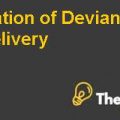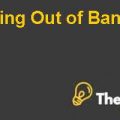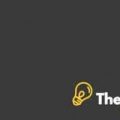
Bessington Trading & Sons (BTS) Case Solution
Q:1) Relationship between change readiness and change agents
Readiness is considered as a biased term in terms of scope and degree. This shows what and who needs to be ready, and whose opinion should be included when judging readiness. Generally, change in readiness has two primary view points; first is readiness in measured in terms of financial, human, material and informational resource that can contributed in the change, and second is determined by the emotional willingness of people to bring the change who are likely to be affected by the change in the company. (DAVE BOUCKENOOGHE, 2009). Readiness to change should be viewed by the perspective of employees, work units, organization, and global partners of the organization. Three primary drivers impact change in readiness, such as; cultural readiness, commitment readiness, and capacity readiness. The cultural readiness determines the alignment between cultural norms and the anticipated change. Whereas the commitment readiness means that leaders must resolve and oversee the change through successful completion within the company’s overall objectives. Lastly, the capacity readiness is the degree to which the organization is capable to pursue supportive work environment, process, knowledge, experience, skills, and resources in order to help in implementing change. (Combe, 2014)
The cultural aspect of the change includes shared norms, beliefs, and behaviors of the employees that influence what change should be undertaken by the organization, what should be change or not change, and if the change will be implemented and sustained. Furthermore, the capacity includes, work structures, knowledge, experience, and resources that are required select, implement, and sustain the change. Capacity can influence that organizational ability to assess the needed changes, to accomplish a change plan, and to achieve desired results from the change plan. However, the commitment aspect includes, understanding of the marketplace, needs, complexity involved in the environment, and the alignment of change with the organizational values. Commitment encourages initiating the change and gives confidence that the proposed change is right for the organization. However, it is influenced by the culture and drives capacity. (Combe, 2014)
It is considered that, the change and readiness are depended to each other, as the successful change can be accomplished when it is ready to be accepted by everyone in or outside the organization. The most influencing aspect to the change are the employees whose readiness is considered to be the most important factor in implementing new procedures in the company. In addition, the employees, board, and leaders are considered as the agents of change; since without their contribution and collaboration, it is nearly impossible to bring change in the organization. (Walinga, 2008)
The change agents can influence the readiness to change. For instance, if the management of the company communicates the change processes and procedures with the employees, then the resistance to change can be minimized. The management should make sure that the employees and other stake holders are participating in the planning and decision making process in order to boost their morale, which in turn would help the firm to bring the acceptance of change among the employees of the organization. (Combe, 2014)
Q:3) Organizational Open System
| INPUT
Inputs are the standardized material and elements that used by the organization to generate the value.
|
PROCESS
Organizations apply some procedures to convert the inputs into outputs.
|
OUTPUT
It is the result from the organizations’ input.
|
| People (employees, stakeholder, managers) | Individual/ Teams | Products (high quality of garments) |
| Technology (production techniques, manufacturing) | Rewards | Revenues |
| Rewards (sick leaves, holidays) | Motivation | Commitment to work/ loyalty (employees loyalty, recognition) |
| Collaboration ( teamwork, cooperation) | Functions | Ideas (new opportunities) |
.......................
This is just a sample partial case solution. Please place the order on the website to order your own originally done case solution.












